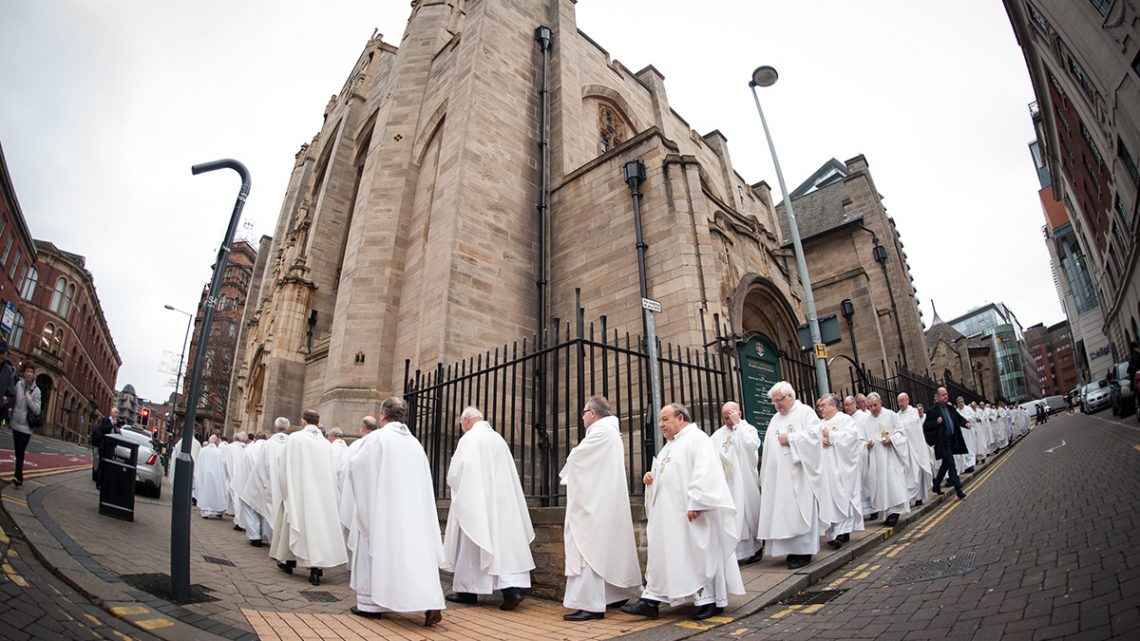St Anne's Cathedral, Leeds was designed by a local architect John Child and opened in October 1838.

It was dedicated to St Anne in honour of Anne Humble, the late sister of Grace and Sarah Humble the principal benefactors of the new church, which stood at the junction of Guildford Street – the present Headrow – and Cookridge Street.
St Anne’s was raised to Cathedral status in 1878 upon the creation of the Diocese of Leeds. Twenty years later it was clear that the days of this great church were numbered owing to Leeds Corporation’s plans for this part of town. At the end of 1899 it was formally announced that the Cathedral was to be compulsorily purchased and demolished. Several alternative sites for its replacement were considered but it was decided to accept the Corporation’s offer of land just yards from the existing church, at the junction of Cookridge Street and Great George Street.
Construction of the present Cathedral began in the autumn of 1901 and was completed in the early part of 1904. The task of designing Leeds’ new Cathedral was given to a London architect, John Henry Eastwood (1843-1913), who had been born near Leeds. He in turn engaged the services of a talented assistant, Sydney Kyffin Greenslade (1866-1955). Together they produced an outstanding design in the Arts and Crafts neo-Gothic style with an unusual layout to accommodate the Cathedral’s relatively small city centre site.